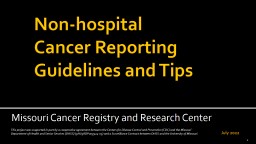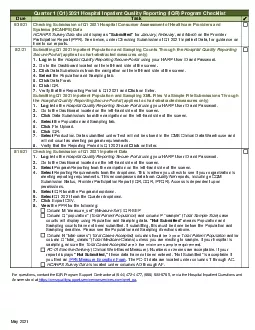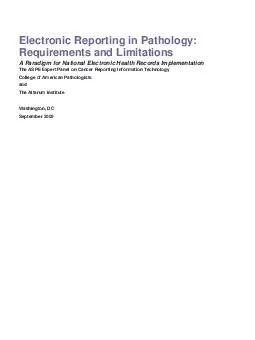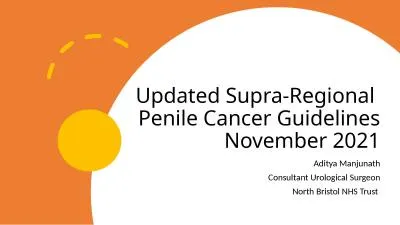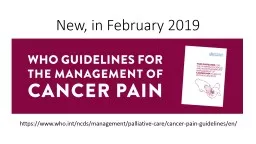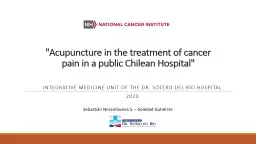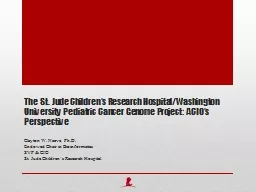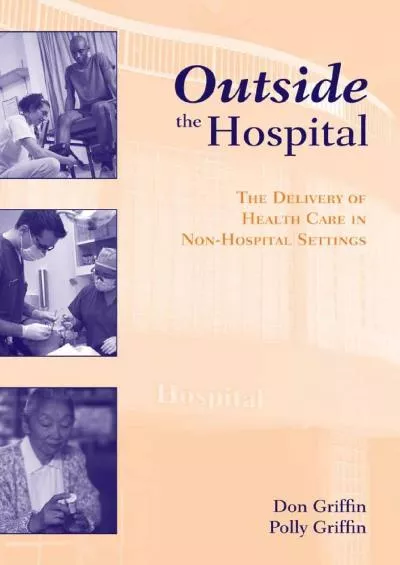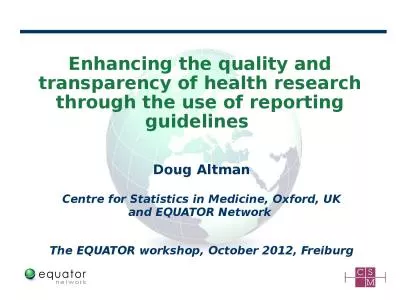PPT-Non-hospital Cancer Reporting Guidelines and Tips
Author : ida | Published Date : 2023-07-21
Missouri Cancer Registry and Research Center 1 July 2022 This project was supported in part by a cooperative agreement between the Centers for Disease Control and
Presentation Embed Code
Download Presentation
Download Presentation The PPT/PDF document "Non-hospital Cancer Reporting Guideline..." is the property of its rightful owner. Permission is granted to download and print the materials on this website for personal, non-commercial use only, and to display it on your personal computer provided you do not modify the materials and that you retain all copyright notices contained in the materials. By downloading content from our website, you accept the terms of this agreement.
Non-hospital Cancer Reporting Guidelines and Tips: Transcript
Download Rules Of Document
"Non-hospital Cancer Reporting Guidelines and Tips"The content belongs to its owner. You may download and print it for personal use, without modification, and keep all copyright notices. By downloading, you agree to these terms.
Related Documents

